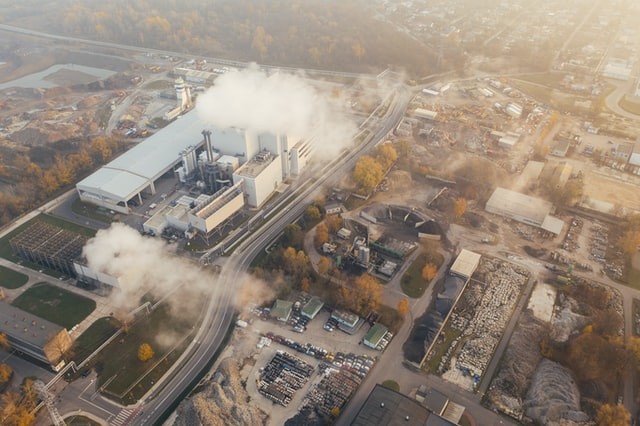Enzymes are substances that act as catalysts in living things, controlling the rate of chemical reactions taking place without changing the substance itself.
A new study describes the components that make up the enzyme N2O reductase, and provided important information about how it converts dangerous nitrous oxide into inert nitrogen and water.
Juan Du, a professor at VAI, Wei Lü, a professor at VAI, and Oliver Einsle, a professor at the University of Freiburg, co-led the study.
Enzymes in greenhouse gas
 (Photo : Marcin Jozwiak/Unsplash)
(Photo : Marcin Jozwiak/Unsplash)

The fight against greenhouse gases is a significant, multifaceted undertaking.
The results of today's study, according to Du, represent an early but crucial step in the creation of a new tool that may be used to counteract one of the causes of climate change, as per ScienceDaily.
Global temperatures are rising as a result of greenhouse gases' ability to trap heat in the atmosphere of the planet.
Although it only makes up about 7% of the greenhouse gases generated by human activity, nitrous oxide has a 300-fold greater impact than the most prevalent greenhouse gas, carbon dioxide.
According to the U.S., nitrogen fertilizer use is one of the agricultural practices that produces nitrous oxide most frequently.
It can linger in the air for up to a century.
The nitrogen cycle on Earth is naturally broken down by N2O reductase, which is used by specific microbes. Nitrous oxide can escape into the atmosphere if nitrogen-rich fertilizers are used, as they can prevent these microbes from fully mitigating it.
To come up with a strategy to mediate nitrous oxide and lower atmospheric levels, it is essential to understand exactly how this occurs.
Understanding and managing the copper ion supply during the assembly of N2O reductase in the cell is crucial for the biotechnological processes of this enzyme.
The structure of a membrane protein complex called NosDFY and how it assembles N2O reductase were the main topics of the study.
The team discovered that NosDFY functions as a conduit that transforms chemical energy into mechanical energy, which will in turn powers the delivery of copper ions required for production of more N2O reductase.
This was accomplished using a variety of mapping and modeling techniques.
The discoveries alter an opinion that has been held for ten years about this vital copper delivery system and show a brand-new mode of action for related molecules.
The results offer a thorough blueprint that could be incorporated into future environmental cleanup techniques, even though more research is required.
Also Read: A Microbial Enzyme Produces a Novel Form of Biopolymers
Enzymes
All biological processes in living things are chemical reactions, and enzymes regulate the majority of them.
Much of these reactions would still not occur at a noticeable rate without enzymes.
Every aspect of cell metabolism is catalyzed by enzymes, as per Britannica.
Since the 1980s, it has been proven that certain nucleic acids, known as ribozymes (or catalytic RNAs), could catalyze, disproving the presumption that all enzymes are proteins.
One or more polypeptide chains of amino acids make up a large protein enzyme molecule. The characteristic protein folding patterns, which are crucial for enzyme specificity, are determined by the amino acid sequence.
The protein structure may lose its integrity and lose its ability to function as an enzyme if the enzyme is subjected to changes, such as variations in temperature or pH.
Often, but not always, denaturation can be reversed.
Related Article: Researchers Reveal Enzyme Cocktail That Speeds Up Degradation of Plastic
© 2024 NatureWorldNews.com All rights reserved. Do not reproduce without permission.

![Tsunami Hazard Zones: New US Map Shows Places at Risk of Flooding and Tsunamis Amid Rising Sea Levels [NOAA]](https://1471793142.rsc.cdn77.org/data/thumbs/full/70325/280/157/50/40/tsunami-hazard-zones-new-us-map-shows-places-at-risk-of-flooding-and-tsunamis-amid-rising-sea-levels-noaa.jpg)



